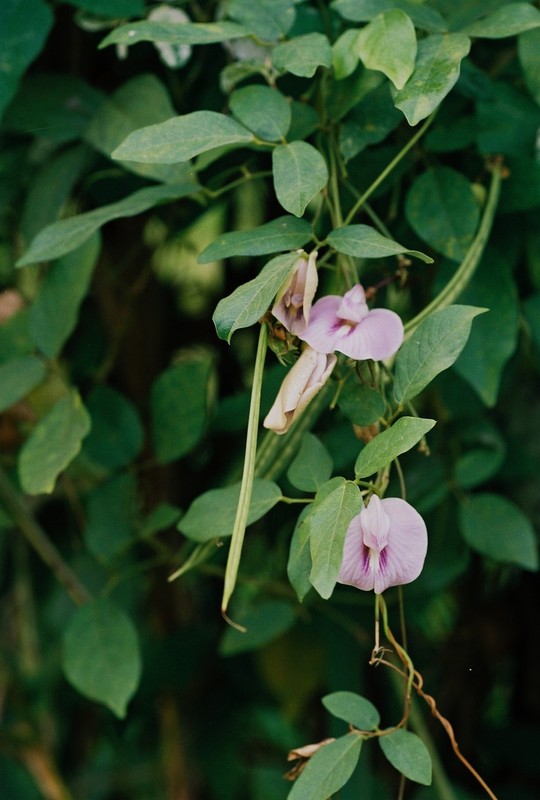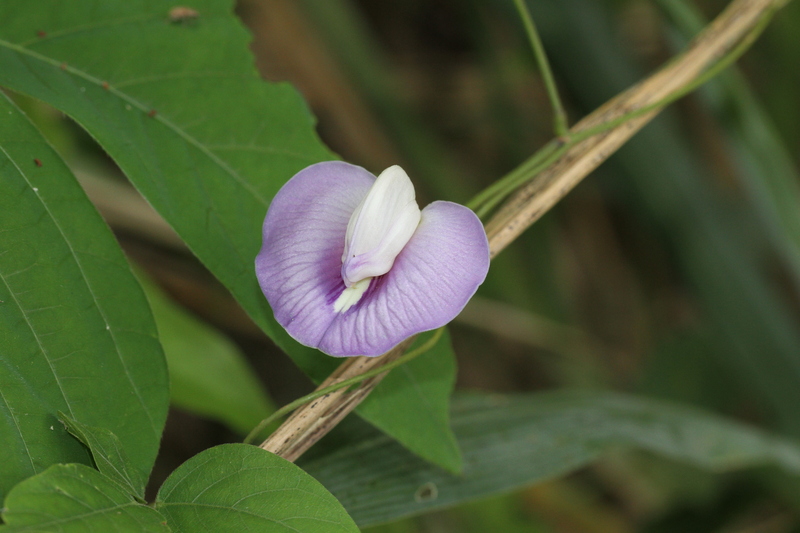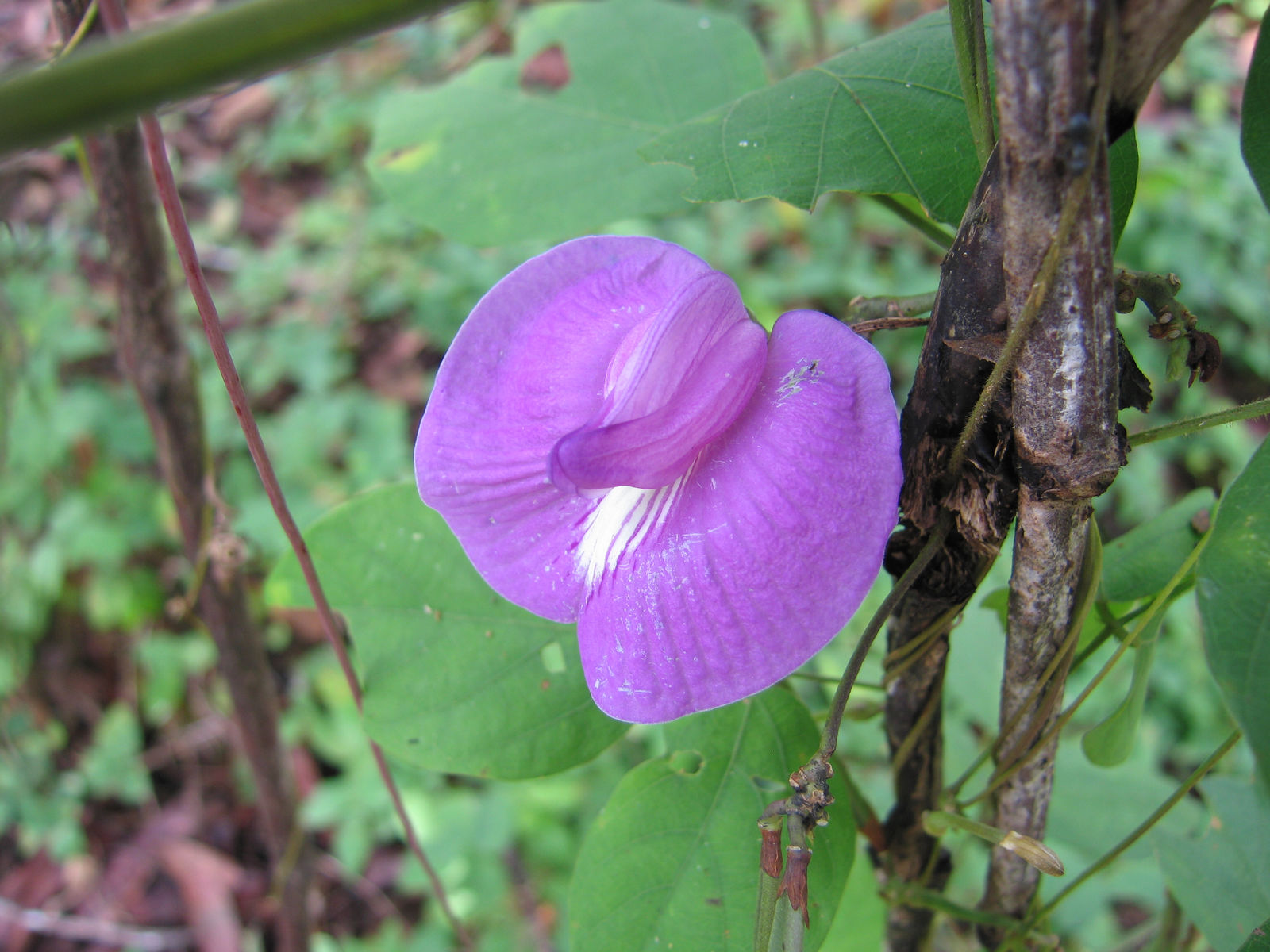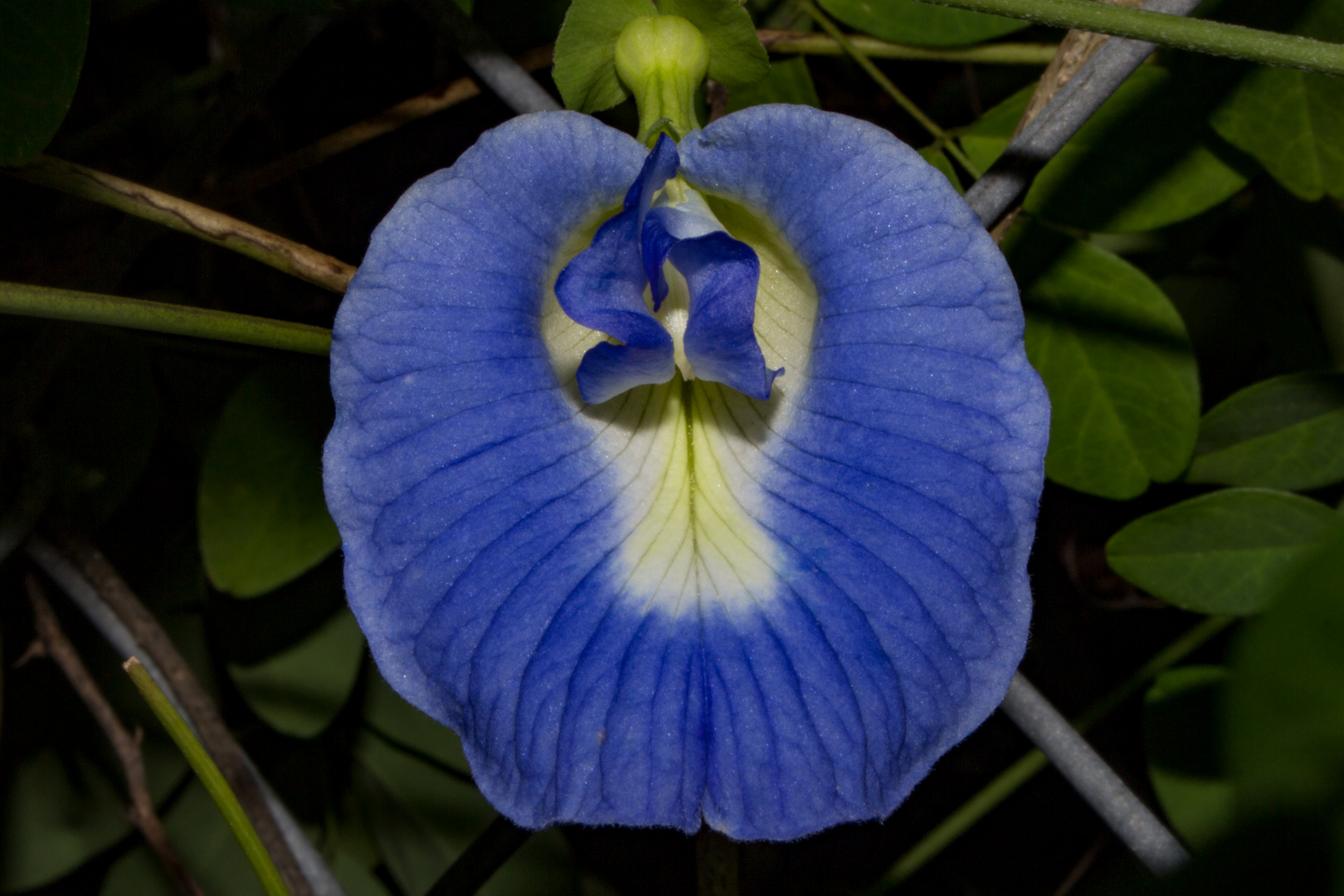
Centrosema pubescens Benth. André Cardoso Flickr
Centrosema pubescens adalah spesies tumbuhan berbunga dari suku polong-polongan. Tumbuhan ini dapat tumbuh secara liar ataupun budidaya, dapat dimanfaatkan sebagai tanaman obat ataupun pakan ternak. Terna tahunan yang akan berkayu ketika usianya lebih dari 18 bulan.Daun bercabang tiga; tiap anak daun berbentuk elips, bulat telur-memanjang atau bulat telur-lanset, panjang 1-7 cm dan lebar 0.5-4.

Centrosema pubescens Butterfly
Download Citation | Variasi Genotip Lokal Tanaman Centro (Centrosema Pubescens) Sebagai Pakan Ternak | Tujuan penelitian ini untuk memberikan informasi keragaman karakter kuantitatif produksi.

Centrosema pubescens Familia Papilionoideae, Common name Plants, Butterfly pea plant, Hardy plants
Centrosema pubescens Benth. First published in Comm. Legum. Gen.: 55 (1837) This species is accepted The native range of this species is Mexico to Tropical America. It is a climbing perennial or subshrub and grows primarily in the wet tropical biome. It is used as animal food and a medicine, has environmental uses and for food.

Centrosema pubescens (Fabaceae) image 116007 at PhytoImages.siu.edu
Centrosema pubescens is a short day plant, that is, the plant needs short days to flower. Centrosema pubescens yields better at pH levels between 6.1 and 6.4 and it grows better in sandy loam soils. Nodulation and nitrogen fixation are also highly correlated with soil pH. It performs better on acidic soils than alkaline soils.

Centrosema pubescens john_amend_all2000 Flickr
The plant Centrosema pubescens that belongs to the Fabaceae family is characterized by herbaceous, twinning, and climbing stem. The main objective of this study is to investigate the phytochemicals of C. pubescens and establish its bioprospection analysis. The preparations of crude extract of leaf stem and flower parts of the samples were done with the Soxhlet apparatus.

West African Plants A Photo Guide Centrosema pubescens Benth.
Centrosema pubescens Benth. [family LEGUMINOSAE-PAPILIONOIDEAE], l.c. 119 (1839); Wilczek l.c. Information. A creeper with shortly pubescent stems and leaves; flowers pink mauve or white with purple markings. Range. Introduced from America as a cover crop. Distribution.

Centrosema pubescens (Fabaceae) image 115988 at PhytoImages.siu.edu
This review attempts to address the difficulty in restoring grasslands to secondary tropical forest through reforestation. Proposed strategies are discussed for future recruitment methods for woody vegetation. This study examines work conducted in Knuckles Forest Reserve (KFR) in the lower montane tropical rainforest and grasslands of Sri Lanka.

West African Plants A Photo Guide Centrosema pubescens Benth.
Green when immature, brown when mature, forming an open spiral on shattering. Seeds: Plump, squarish and slightly flattened, 5 mm long, 4 mm wide and 2 mm thick. Pale 2 mm x 1 mm scar with a mid-brown centre on one edge. Mid-brown and shiny with black mottles, often in rough lines. Smooth. 45 000 seeds/kg.

Campanilla (Centrosema pubescens Benth) Leguminosa Forrajera
Centro ( Centrosema molle Mart. ex Benth.) is a vigorous twining, trailing and climbing perennial legume. It has a deep root-system with tap roots and lateral roots. Leaves are dark green and trifoliate ( Ecocrop, 2009 ). Leaflets are ovate, 4 cm long x 3.5 cm broad. Flowers, borne in axillary racemes, are bright or pale lilac with violet stripes.
Centrosema pubescens Benth. by K R Niveditha on 12 February 2017
VARIASI GENOTIP LOKAL TANAMAN CENTRO (Centrosema pubescens) SEBAGAI PAKAN TERNAK Genotypic Variation of Centro Indigenous (Centrosema pubescens) plants as animal feed Hanief Eko Sulistyo1), Siti Nurul Kamaliyah1), Imam Tatang Mustofa2) 1) Dosen Nutrisi dan Makanan Ternak Fakultas Peternakan, Universitas Brawijaya Jalan Veteran, Ketawanggede, Kec.

Centrosema pubescens Butterfly
Population dynamic of Scirtothrips dorsalis Hood (thysanopetera: Thripidae) on mango and associated weeds under low and intensive agricultural practices. AGRIVITA, Journal of Agricultural Science, 41 (3) 575-585.

Centrosema pubescens stock photo. Image of urban, petal 251184046
Pod linear, compressed, approx. 13 cm long and 5‒6 mm broad, straight to slightly bent and beaked, containing up to 15 seeds. Seeds transversely oblong to very slightly reniform, approx. 5 mm long, yellowish-greenish with dark mottles. 36,000 seeds per kg. (This description refers to the C. pubescens form as represented by cv. Belalto.)

Centrosema pubescens, Tanaman Legume Cover Crops
Centrosema, the butterfly peas, [2] is a genus of (mainly tropical) American vines in the legume family ( Fabaceae ). It includes 44 species, which range through the tropical and warm-temperate Americas from the southern United States to northern Argentina. Species include: [1] Centrosema acutifolium Benth. Centrosema angustifolium Benth.

Centrosema pubescens Benth. by Robins Pulikurumba on 16 November 2022
In this study, we used microsatellite loci to estimate the outcrossing rate of Centrosema pubescens in open-pollinated populations of 10 progenies that each contained 20 genotypes. The multilocus outcrossing rate was 27%, which suggested a mixed mating system with a predominance of autogamy. The single locus outcrossing rate was 13%. The difference was 0.040, which indicated that only 4% of.

Centrosema pubescens Foto & Bild urlaub, blue, fotos Bilder auf
Centro is a perennial herb that can reach a height of 45 cm. The root system can reach up to 30 cm in depth, frequently in association with "Rhizobium", nitrogen-fixing bacteria. Stems grow and branch rapidly, producing a dense mass of branches and leaves on the soil. Stems do not become woody until about 18 months after planting.
Centrosema pubescens, Tanaman Legume Cover Crops
Taxonomic position. CenMV is a tentative member of the genus Potyvirus and family Potyviridae.. Geographical distribution. CenMV infection in plants of Centrosema pubescens was reported from Nigeria (Odedara et al. 2007).An earlier report of a virus under the same name from Papua and New Guinea (van Velsen and Crowley, 1961) may be the same or a different virus.